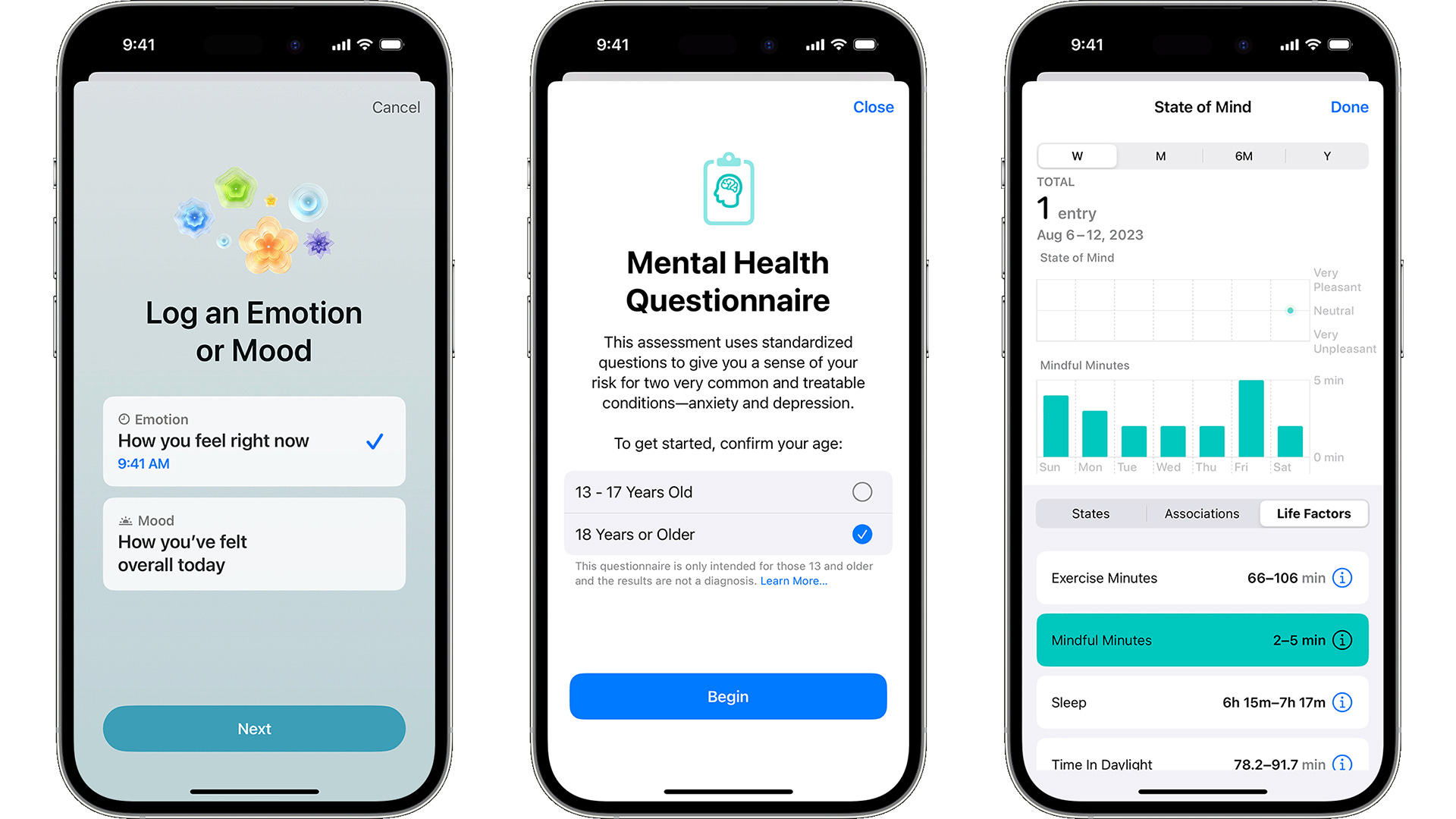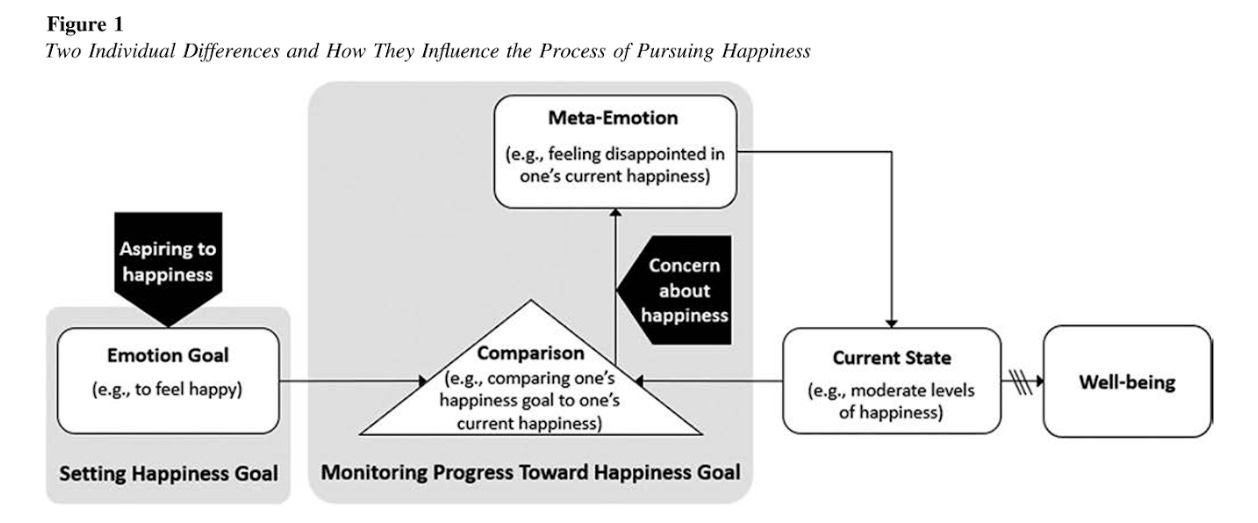Together with bell bottoms and feathered hair, temper rings had been all the trend within the Nineteen Seventies. A fast look on the coloration of the ring would let you recognize in case you had been feeling good, dangerous or in between. Black signified nervousness, blue meant relaxed, and violet meant passionate. The rings had been mentioned to vary coloration in response to the wearer’s physique temperature which was supposedly related to their emotional state. It didn’t take lengthy for temper rings to be escorted to the halls of scientific eye rolls however the curiosity in temper consciousness persists. Simply final yr Apple launched a State of Thoughts function within the Well being App to assist customers monitor their emotional state. The concept is to label your temper after which observe it. As an apart, in accordance with my daughter, temper rings have made a comeback and she or he tells me the colour amber means her mother is annoying her however that may be a dialogue for an additional day.

What if all this deal with our interior lives could be making a few of us depressing? There’s proof that directing consideration towards our temper states is probably not as useful as assumed. In the identical means that an individual who worries excessively about their well being—what was once known as hypochondria however is now often called sickness anxiousness dysfunction—turns into preoccupied with protecting observe of their well being standing, checking for the onset of sickness and is hyper attuned to bodily sensations, an identical scenario can come up within the case of somebody who’s obsessive about monitoring their temper. Such hypervigilance could also be counterproductive and lead to rumination and neurotic conduct.
As noticed in a analysis research printed in Persona and Social Psychology Bulletin:
Like hypochondriacs who’re nervously attuned to every twitch and tremor of their our bodies, temper monitoring would indicate an identical kind of examination of or dwelling on one’s temper—for some, maybe, to the purpose of unhealthfulness, however for many, out of a easy concern with monitoring the progress of 1’s emotions. The problem with temper monitoring, then, is that it might contribute to changing into absorbed in a single’s temper state, very like the overconcern with bodily well being skilled by the hypochondriac. Excessive temper screens could verify on their moods usually, and be fairly vigilant in doing so, but should stay a bit confused in regards to the nature of the temper state. Simply because the accuracy of hypochondriacs’ diagnoses could also be clouded by quite a few false alarms or uncertainty in regards to the nature of the discomfort, so, too, could excessive temper screens’ judgments of their moods be clouded by too nice an absorption within the temper state itself.
Encouraging individuals to deal with how, why, and what they’re feeling could inadvertently be making some individuals really feel worse. I had a affected person who was so involved with feeling blissful that it was undermining her potential to truly be blissful. Consistently asking herself, “Am I blissful?” “Am I actually blissful?” created a Pandora’s field of hyper scrutiny and self-focus. “I imply everyone seems to be telling me that getting this promotion is an effective factor and that I needs to be blissful and sure, I be ok with it and proud. However am I actually blissful? The extra I give it some thought, I’m not so positive.”
A research printed within the journal Emotion just lately discovered that pondering an excessive amount of about one’s personal stage of happiness could be fueling fears about not measuring up or being blissful sufficient. The issue with fretting in regards to the hole between one’s desired stage of happiness and precise stage of happiness is that it unlocks a slew of destructive meta-emotions—emotions about what we’re feeling—which may be harmful. Within the research, individuals who mentioned they had been frightened about reaching and sustaining happiness tended to have extra depressive signs, worse wellbeing, and fewer life satisfaction than those that didn’t fear about it.

Because the lead writer and social psychologist Felicia Zerwas defined in an interview: “Think about somebody going to a birthday celebration, and halfway by way of the occasion they notice they don’t seem to be as blissful as they had been anticipating to be. One may simply acknowledge that it’s a reality of life and birthday events. Or, one may choose it, pondering how unhappy and disappointing it’s.” Fixating on what’s flawed infuses constructive occasions with negativity and dilutes blissful moments with doubt. Furthermore, it undermines the flexibility to truly get pleasure from one thing, even when it falls wanting expectations.
Consistently evaluating your temper and directing your consideration to how you’re feeling could inadvertently be stressing you out. Worrying about being blissful on a regular basis is fueling discomfort with destructive feelings. Unhappiness, frustration, and disappointment are all completely regular and applicable responses to unhappy, irritating, and disappointing conditions. However when these temper states turn into the enemy that both must be managed or averted, an incapacity to take action can look like a private failure. It’s no shock that viewing destructive feelings as dangerous and problematic is linked to worse psychological and bodily well being together with elevated irritation and better danger of cardiovascular ailments. Compared, viewing destructive feelings as a fluctuating and transient a part of a pure cycle buffers towards their dangerous results.
A part of the problem could be grounded in how we’ve got been taught to consider our emotional lives. In Between Us: How Cultures Create Feelings, the Dutch psychologist Batja Mesquita describes how psychology within the western world is based totally on what’s going on inside our head. As within the film Inside Out, an individual’s inside world has turn into the headquarters of their happiness or unhappiness. Mesquita makes use of the acronym MINE to explain this mannequin during which feelings are Mental, INfacet an individual and Essentialist—i.e. all the time having the identical properties. She compares it to another strategy: as a substitute of treating feelings as psychological and inside, she means that maybe we must always conceive of them as acts taking place between individuals and acts which can be being tailored to the scenario at hand. On this mannequin, feelings are OURS— OUtside the individual, Relational, and Situated. On the finish of the day, what issues is what we do, not what we take into consideration what we really feel.
By encouraging individuals to judge and dwell on how they’re feeling, I fear we’re unintentionally making them really feel worse. As Nobel prize winner Daniel Kanheman noticed, “Nothing in life is as necessary as you assume it’s, when you are fascinated about it.” It’s fairly potential that the much less we take into consideration how we’re feeling, the higher we’ll really feel. Fairly than frequently judging and monitoring feelings, a far more healthy strategy could be to simply accept them and study from them after which transfer ahead.



